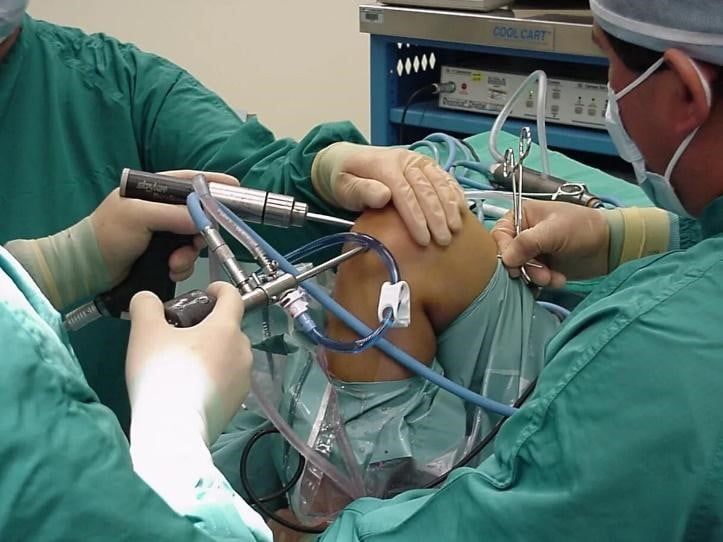Knee Surgery ACL Reconstruction: Everything You Need to Know
🔳Overview
For athletes and other active people, knee injuries can be a tragic setback. An ACL tear is one of the most frequent injuries, which can result in instability, discomfort, and trouble going through the knee joint. ACL reconstruction during knee surgery is fortunately available as a remedy thanks to modern medical technology. This article will cover a lot of ground, including what an ACL reconstruction is, how it functions, and what to anticipate with the recovery from ACL reconstruction. and more.
Understanding ACL Injuries
Now let us have a look at what creates ACL injuries to take place before we discuss ACL reconstruction. One of the important ligaments that aid in stabilizing the knee joint is the anterior cruciate ligament or ACL. It keeps the knee from relocating too far forward or twisting too much by joining the femur (thigh bone) to the tibia (shin bone).
When the knee experiences an unexpected turning or hyperextension force, as can happen when lost balance from a jump or pivots suddenly while running, ACL injuries frequently result. ACL tears are particularly common in athletes who play high-impact sports like basketball, soccer, and football.
Symptoms of an ACL tear may include:
- A loud popping sound at the time of injury
- Severe pain and swelling
- Limited range of motion
- Instability or a feeling of the knee "giving way."
It's crucial to see a doctor right away if you think you may have torn your ACL. Nonsurgical options like physical therapy or steeling might be enough in some circumstances. The best option, however, is frequently ACL reconstruction surgery for the knee.
What is Knee Surgery ACL Reconstruction?
A knee operation ACL reconstruction is a major operation used to implant a new ligament in place of an ACL that has been torn or damaged. A surgeon will typically remove a graft (a piece of tissue) from the patient's body during the procedure, typically from the hamstring or patellar tendon. After that, the graft is placed inside the knee joint and fastened with fasteners or other tools.
ACL reconstruction types of graft, including:
- Autografts: Tissue harvested from the patient's own body (e.g., hamstring, patellar tendon, quadriceps tendon)
- Allografts: Tissue harvested from a donor (typically a cadaver)
- Synthetic grafts: Artificial materials that mimic the structure of a natural ligament.
So, every type of graft has benefits and drawbacks of its own, and the patient's age, level of activity, and general health will determine which graft is best for them.
🔳 The procedure: Before, During, and After
What Happens Before Surgery?
Many steps are performed to prepare the patient for knee surgery, such as ACL repair surgery, and to assure the best possible outcome.
- The first step is a medical exam to find out if the person is healthy enough to have surgery. These could involve blood tests, X-rays, and an electrocardiogram (EKG) to assess the heart.
- Once the patient has been given permission to have surgery, they should talk to their surgeon about the operation, any risks that come with it, and what they expect to happen. The patient may also meet with a physical therapist to talk about things they can do to get their knee ready for surgery and to get ready for recovery from ACL reconstruction.
- Depending on the type of anesthesia used during surgery, the patient may meet with an anesthesiologist to talk about their health history and figure out the best way to use anesthesia.
- The patient will be told exactly what to do in the days before surgery, such as when to stop eating and drinking, which medicines to skip, and how to get ready for recovery.
- The patient may have lab tests, such as an MRI scan, to obtain a more thorough look at the knee and check that the operation plan is appropriate.
By taking these steps, the medical team can make sure that the person is healthy enough for surgery, that the plan for the surgery is good, and that the patient is ready for the recovery phase.
What Happens During Surgery?
During knee surgery, like ACL reconstruction surgery, there are several steps that need to be taken to fix or replace damaged knee joint tissue.
- Anesthesia: The first step is giving the patient anesthesia to make sure they are comfortable and don't feel any pain during the operation. Regional anesthesia numbs only the bottom half of the body, as opposed to general anesthesia, which renders the patient unconscious.
- Incision: After the anesthetic has taken hold, the surgeon will make an incision in the knee to gain access to the injured tissue. Depending on what kind of surgery is being done, the size and location of the incision can be different.
FAQs
Do you want to make sure you are seeing a skilled surgeon?
We're here to assist you in making informed decisions about your surgeons.


